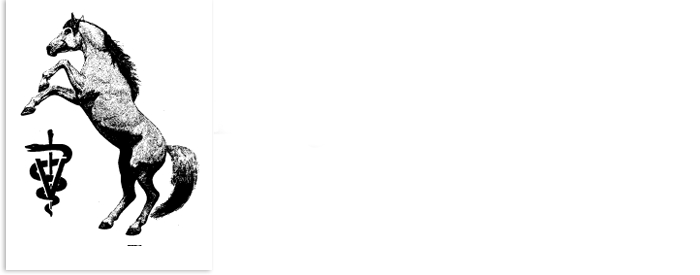Skin Conditions - Understanding Sarcoid Tumors
Sarcoids are the most common skin tumors occurring in horses. The most common sites are the head (ears, eyelids, mouth), legs and the abdomen. I have seen them at many other sites including the tail, chest and neck.
Sarcoids are classified as either verrucous (warty) or fibroplastic (similar looking to black colored proud flesh) or a combination of the two types. They can appear like a patch of tumor on the skin or appear as what is called pedunclulated (with a stalk).
The warty looking sarcoid has a dry horny, cauliflower like surface and is usually less than 2 inches in diameter. Some are very flat and consist of sharply bordered areas of slightly thickened skin with a mildly roughened surface that may be devoid of hair.
The fibroplastic types (which look like proud flesh) appear as firm nodules attached to the skin but under the epidermis or surface skin. This type may reach the size of 6 to 8 inches in size. I have taken off tumors the size of grapefruits from a horse.
The exact cause of the tumor is unknown. Growth rates can be highly variable. After initially appearing the tumor may remain the same size for years or may just as suddenly exhibit rapid growth. In other cases the growth may be rapid and aggressive from the outset.
Sarcoids are locally invasive but are not metastatic. This means that unlike cancerous tumors they will not spread to the internal organs of a horse. It is thought that through rubbing and biting at the tumors, a horse may spread the tumor to other sites on the skin in it's own body.
Sarcoids are the most common tumors of the skin in horses. They may be confused with habronemiasis, squamous cell carcinoma, melanoma (common in gray horses) and fibromas. The only true way to differentiate a tumor is to take a biopsy and send it to a lab for microscopic evaluation by a pathologist. The problem with that is short of excising the complete tumor, taking a small sample for biopsy may result in increasing the growth rate of the tumor.
A variety of treatment regimens are used on Sarcoids. The very fact that so many treatments are used indicates that no one treatment works in all cases. The simplest treatment is surgical removal of a tumor. However, it may be difficult to determine the edge of the tumor cells. Leaving only one tumor cell following surgery is enough to allow the tumor to re-grow. This may account for the 50% recurrence rate of tumors following surgical resection.
Relatively new is the use of local injections of cancer chemotheraputic drug, Cis-platinum. The drug is injected in a series of shots directly into the tumor and has shown promising results in small tumors. In larger tumors the combination of Cis-platinum following surgical resection appears to work very well.
Immune therapy with immune stimulating agents is another form of therapy. In one recent study of 27 horses treated with the agent, Regressin(R), 63% demonstrated complete regression of the tumor with another 26% showing up to 90% regression. Only 3% showed no response at all to the therapy. The immune stimulating agents work best on smaller tumors of less than 2 inches in size.
Radiation therapy is another good choice particularly for tumor located on the eyelid. The tumor is surgically debulked to the extent possible then radioactive implants are placed on the remaining tissue. This results in fewer deformities than cryosurgical techniques described below.
The last therapeutic alternative is cryosurgery. This is treatment of the tumor by the application of liquid nitrogen (-400 degrees Fahrenheit) to the tissue in an effort to freeze the tumor tissue killing the cells. The liquid nitrogen is most commonly applied with a spray or probe. Repeated rounds of freezing and then allowing the tissue to thaw are used. Cryotherapy alone may work on small lesions. In larger tumors surgical resection followed by cryotherapy may be used. The horse owner should expect swelling and purulent discharge at the site as the tumor dies and the skin heals. Permanent loss of hair color at the site should be expected.
In summary most sarcoids can be treated. However, the choice of treatment and the success rate of that treatment for a given patient can vary tremendously.

